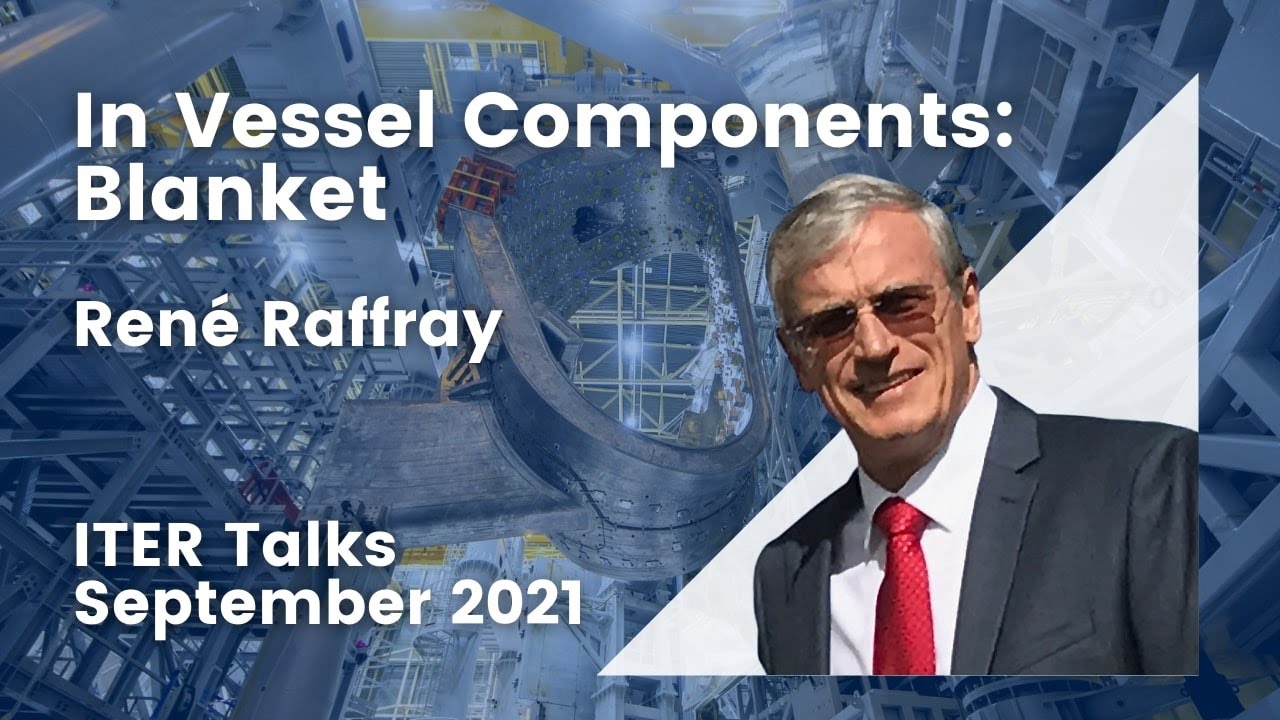The blanket, composed of 440 modules with a total mass of 1530 tonnes that line the inner walls of the torus chamber containing the fusion plasma, performs several essential functions. A large fraction of the energy released by deuterium-tritium fusion is in the form of high energy neutrons which are emitted isotropically and, being electrically neutral, cannot be confined by the magnetic fields of the reactor. The blanket must absorb them, convert their energy to heat, and remove that heat from the reactor to drive power-generating turbines. Peak power flux is on the order of 5 megawatts per square metre, which is around ten times that experienced by the heat shield of a spacecraft returning from Earth orbit.
The blanket must withstand direct contact with the plasma during start-up and shut-down without contaminating it or causing excessive energy loss. While containing the plasma, it must provide passages for instrumentation to monitor the plasma and, in a mature power production reactor, breed and extract tritium from lithium to support steady-state operation of the reactor.
This is, as they say, “an engineering challenge”.
